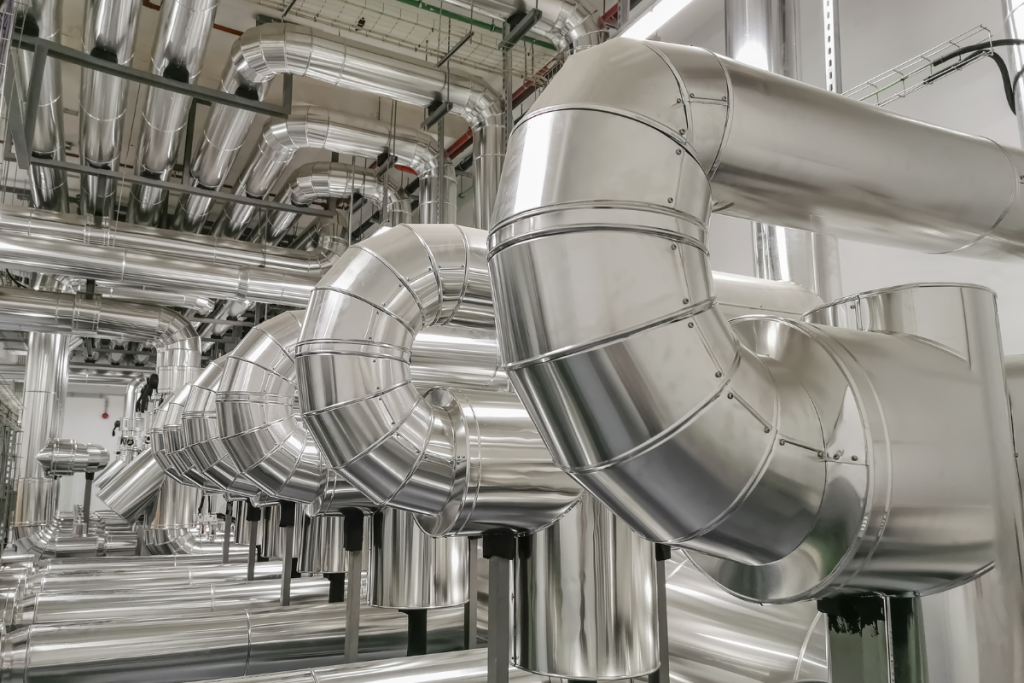Commercial buildings are dynamic environments where various factors contribute to the overall performance of their HVAC systems. Regular maintenance and equipment retrofit play a direct role in heating and cooling efficiency.
However, windows are another critical factor influencing a space’s thermal dynamics.
The interaction between them and HVAC systems is complex, encompassing energy efficiency, occupant comfort, and overall operational costs. Let’s look at the multifaceted ways windows affect commercial HVAC performance and how our commercial HVAC services in Toronto and Ontario can help reduce your energy bills.
Energy Transfer And Thermal Loads
Windows serve as portals for energy exchange between the interior and exterior environments of a commercial building. The amount of sunlight entering through windows, known as solar gain, directly affects the thermal load on HVAC systems. During sunny days, windows can allow substantial amounts of radiant heat to penetrate indoor spaces, leading to an increased demand for cooling. Conversely, windows may contribute to heat loss in colder climates, necessitating additional heating efforts.
The type of glazing material used in windows further complicates this relationship. Single-pane windows, common in older buildings, offer minimal insulation and can result in significant thermal transfer. However, modern double-pane or Low-E windows are designed to mitigate this effect by providing better insulation and reducing heat transfer, thus alleviating the strain on HVAC systems.
Solar Heat Gain And Cooling Demands Through Windows
Solar heat gain through windows can substantially impact the cooling load on commercial HVAC systems. The angle and orientation of windows relative to the sun, as well as the geographical location of the building, play crucial roles in determining the magnitude of this effect. For example, south-facing windows in Southern Ontario receive more direct sunlight, contributing to higher cooling demands during warm seasons.
To address this issue, architects and engineers often employ shading devices such as blinds, curtains, or external shading structures. These solutions help control the amount of sunlight entering the building, reducing the workload on HVAC systems. Smart building technologies and automated shading systems have emerged as innovative approaches to optimize solar heat gain management, dynamically adjusting window coverings based on real-time environmental conditions.
Read More: 6 Tips On Reducing Energy Consumption In Commercial HVAC Systems
Ventilation And Indoor Air Quality (IAQ)
Windows are integral to the ventilation aspect of HVAC systems, allowing for the exchange of outdoor and indoor air. Proper ventilation is crucial for indoor air quality (IAQ), directly impacting building occupants’ health and productivity. However, opening and closing windows can disrupt the balance of HVAC systems, leading to inefficiencies.
Natural ventilation through open windows may be sufficient to meet the fresh air requirements of a space, reducing the reliance on mechanical ventilation systems. However, this approach may not always be feasible, particularly in urban environments with high levels of outdoor pollution or in buildings with specific climate control needs.
Read More: 5 Best Practises to Improve Indoor Air Quality In Commercial Buildings
Smart Tech Integration In Windows
Advancements in building automation and smart technologies have ushered in a new era of integrated HVAC control systems. Windows are now being integrated into these systems to enhance overall building performance. Automated controls can adjust HVAC settings based on real-time data from sensors, considering factors such as solar radiation, outdoor temperature, and occupancy patterns.
For example, when Smart systems detect intense sunlight through windows, they can automatically adjust the cooling setpoints or activate shading devices to mitigate the impact on HVAC loads. This level of automation improves energy efficiency and contributes to a more comfortable and responsive indoor environment.
HVAC System Sizing And Load Calculations
The presence and characteristics of windows directly influence the sizing and load calculations for HVAC systems in commercial buildings. Oversized or undersized HVAC systems can lead to inefficiencies, increased energy consumption, and suboptimal comfort conditions for occupants. Accurate load calculations are essential for right-sizing HVAC equipment and ensuring optimal performance.
Windows contribute to both sensible and latent heat loads. Sensible heat refers to the temperature change of air, while latent heat involves the moisture content. The solar gain through windows adds to the sensible heat load, and the humidity levels influenced by ventilation through windows contribute to the latent heat load. By accurately accounting for these factors, HVAC engineers can design systems that are appropriately sized for the specific requirements of the building.
Modern buildings with all-glass facades are visually appealing but can put a higher demand on HVAC systems. As the push for sustainable and energy-efficient building practices continues, architects, facility managers, and HVAC professionals must collaborate to optimize the impact that windows have on commercial HVAC performance to ensure occupant comfort and minimize energy consumption.
We’re always happy to discuss how Springbank’s commercial HVAC services in Ontario can improve your building’s energy efficiency with a customized solution that will save you money, increase the life of your equipment, and optimize the heating and cooling of your space. Contact our team anytime!
Gregg Little, Paul DeThomasis, and Hugo Lopes are co-owners of Springbank Mechanical Systems. You can reach them at 905-569-8990 or via email at gregg@springbank.com, paul@springbank.com, or hugo@springbank.com.






